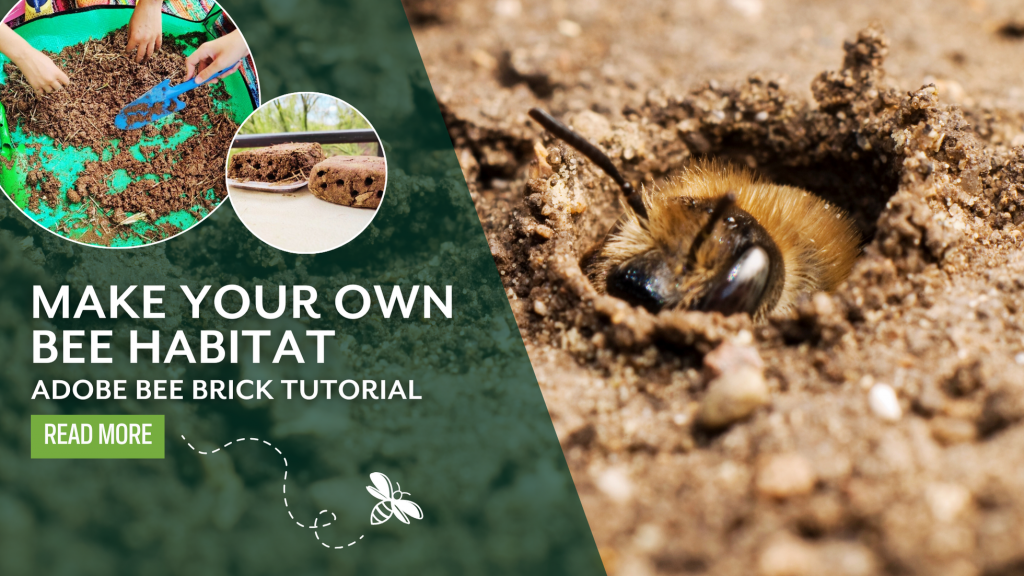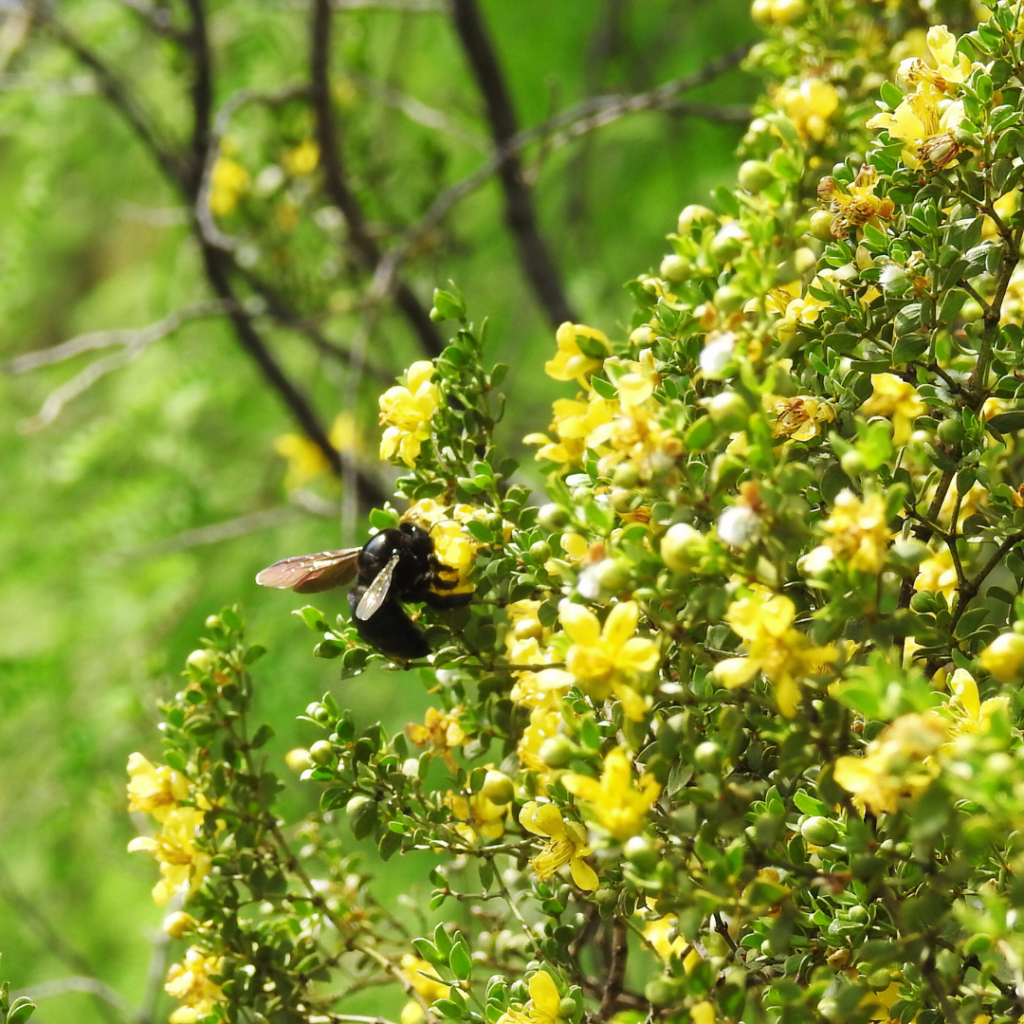
Make Your Own Bee Habitat: Adobe Bee Brick Tutorial
September 10, 2024¡Bienvenidos al Barrio Abeja!
The Sonoran Desert is home to hundreds of bee species that work year-round to pollinate plants and help keep our deserts beautiful and healthy. Despite popular opinion, many of our Sonoran Desert bees do not produce honey or live in hives, but instead nest in the ground or the hollow stems of some plants. Creating habitats for stem nesting bees is a beginner-friendly pollinator conservation project that everyone can try at home!
Inspired by the adobe buildings here at Tohono Chul, we designed children’s workshops that taught children how to create adobe bee bricks for our stem-nesting desert bees. We took advantage of the heat and dried grasses in our children’s garden to create our southwest-themed habitats to take home.
Early summer is ideal for making adobe bricks due to our hot, dry air and the abundance of dried materials we can source in our region. Additionally, many of our summertime stem-nesting bees actively search for nesting habitats and would love the extra real estate!
What You’ll Need
To make your own adobe bee bricks and create a bee barrio at home, you will need the following supplies:
- Clay-rich soil
- Water
- Dried plant material, such as grass
- A trowel to mix (or just use your hands!)
- A brick mold
- Wooden dowels or chopsticks
Assessing Your Soil: Is it Adobe-Ready?
In Tucson, clay-rich soil can easily be collected from our own backyards. To check the clay content of your backyard soil, do a quick soil test to make sure your soil can be used for this activity.
Ideally, you would want the total clay in your soil to be between 10-30%, total silt to be 0-30% and total sand to be 50-75%. For more help, use this Adobe Engineering Challenge worksheet to help breakdown the composition of your soil.
DIY Adobe Bricks: A Step-by-Step Guide
STEP ONE:
Mix 2 parts soil with 1 part water and 0.5 parts straw. Add the water gradually until the mixture holds together when rolled into a ball. If the soil is too crumbly, add more water. If it is too wet, add more soil and straw.
STEP TWO:
Next, shovel the adobe mix into a mold of your choice. We used recycled takeout containers as our brick mold. Invert the filled mold onto the ground, like flipping a cake or making a sandcastle, and pop out your adobe brick. If you are working with a really thick mixture, you can also form the brick without a mold and shape it with your hands!
To create bee nesting holes, use a chopstick or wooden dowels to poke holes while the brick is still hydrated. Consider the types of bees you want to attract and include different-sized tunnels ranging from 1/16 to 5/8 inches in diameter to accommodate various solitary bees.
STEP THREE:
Set your brick out to dry in a sunny spot until it is fully dried. This process should take 5-21 days, depending on weather conditions. During our monsoon season, when the air is more humid, drying can take longer.
Welcoming Bees: Final Steps for Your Adobe Habitat
Once your bee brick is dry and ready for new buzzing tenants, place it in a sheltered area protected from rain and wind. In the springtime, plant some pollinator-friendly plants to ensure your bees stay fed and stocked with building materials all season long.
If you would like to learn more about solitary bees and how to introduce them to your backyards, check out our partner, Crown Bees, and their Bee Knowledgeable library.
Acknowledgment of Support
We are deeply grateful to the Donald Ray Trust for their generous underwriting of these educational workshops. Their commitment to fostering environmental stewardship and community engagement has made it possible for us to share the wonders of the Sonoran Desert’s bee species with our youngest nature enthusiasts.







